Written by
Featured Video
Table of Contents
- Technical Specification
- My setup & first impressions (OS situation)
- Thermals Performance
- Benchmarks Results
- 1) CPU: Sysbench Test (Calculates prime numbers upto 20,000 for every 10k requests)
- 2) Memory Tests
- 3) Geekbench (CPU)
- Storage & networking
- Whisper on Home Assistant (Docker)
- So… should you get one?
- Support the Channel
In this video/article I’m sharing my experience with the Radxa Cubie A5E—a tiny SBC that surprised me with how much it packs into such a small footprint, and how it stacks up against boards like the Raspberry Pi 4 and Pi 5.
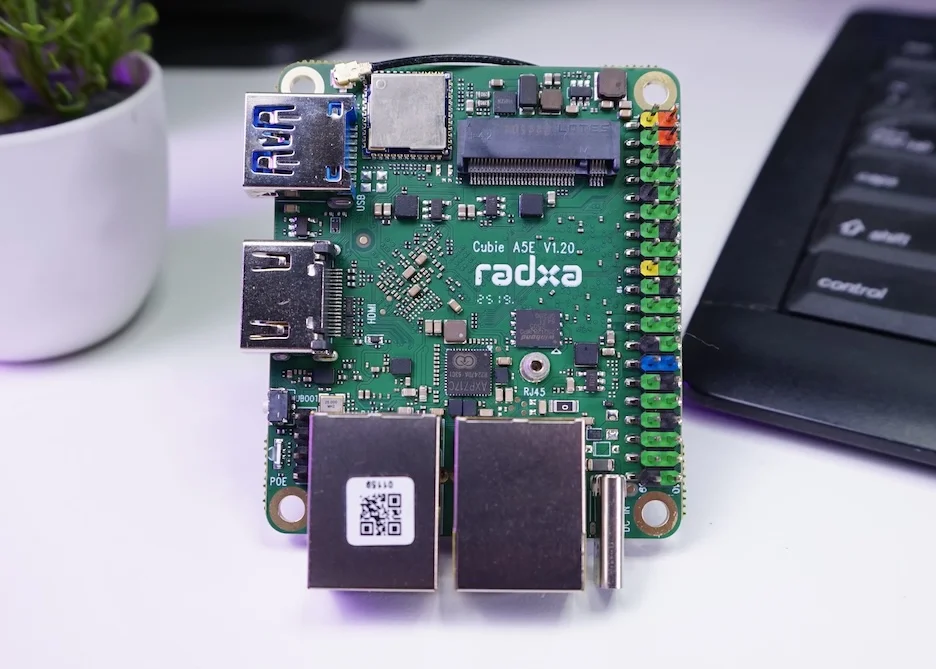
Buy Radxa Cubie A5E:
Technical Specification
| Category | Spec |
|---|---|
| SoC | Allwinner A527 |
| CPU | 8× Arm Cortex-A55: 4× @ 1.8 GHz + 4× @ 1.4 GHz |
| GPU | Mali-G57 MC1; OpenGL ES 3.2, Vulkan 1.1–1.3, OpenCL 2.2 |
| Memory | 4GB LPDDR4 |
| External storage | microSD slot M.2 M-key (NVMe PCIe Gen 2 x1 lane, 2230 modules) |
| Display | HDMI 2.0 up to 4K@60fps 4-lane MIPI-DSI |
| Camera | MIPI-CSI: 1× 4-lane or 2× 2-lane |
| Networking | 2× Gigabit Ethernet (one PoE-capable with add-on HAT) Wi-Fi 6 (802.11ax) Bluetooth 5.4 |
| USB | 1× USB-A 3.0 (Host) 1× USB-C 2.0 OTG (data + power) |
| Expansion | 40-pin 2.54 mm header (UART/I²C/SPI/GPIO/PWM) |
| Power | 5 V via USB-C or GPIO. Recommended ≥10 W baseline; ≥15 W when fully loading USB3/PCIe |
| OS | Debian Linux Android 13 Armbian OS |
(Specs as per Radxa’s product page.) Radxa Cubie A5E

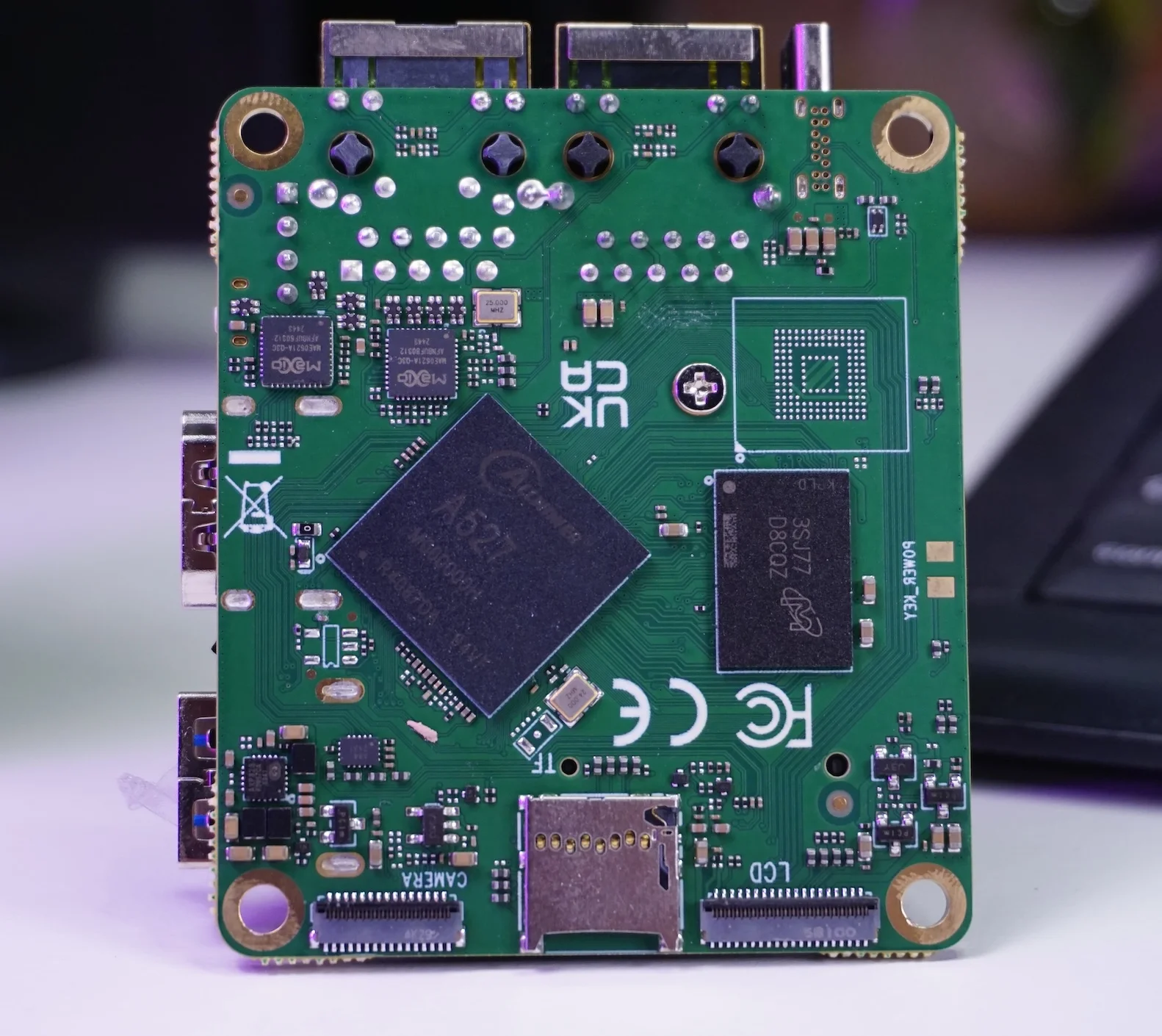
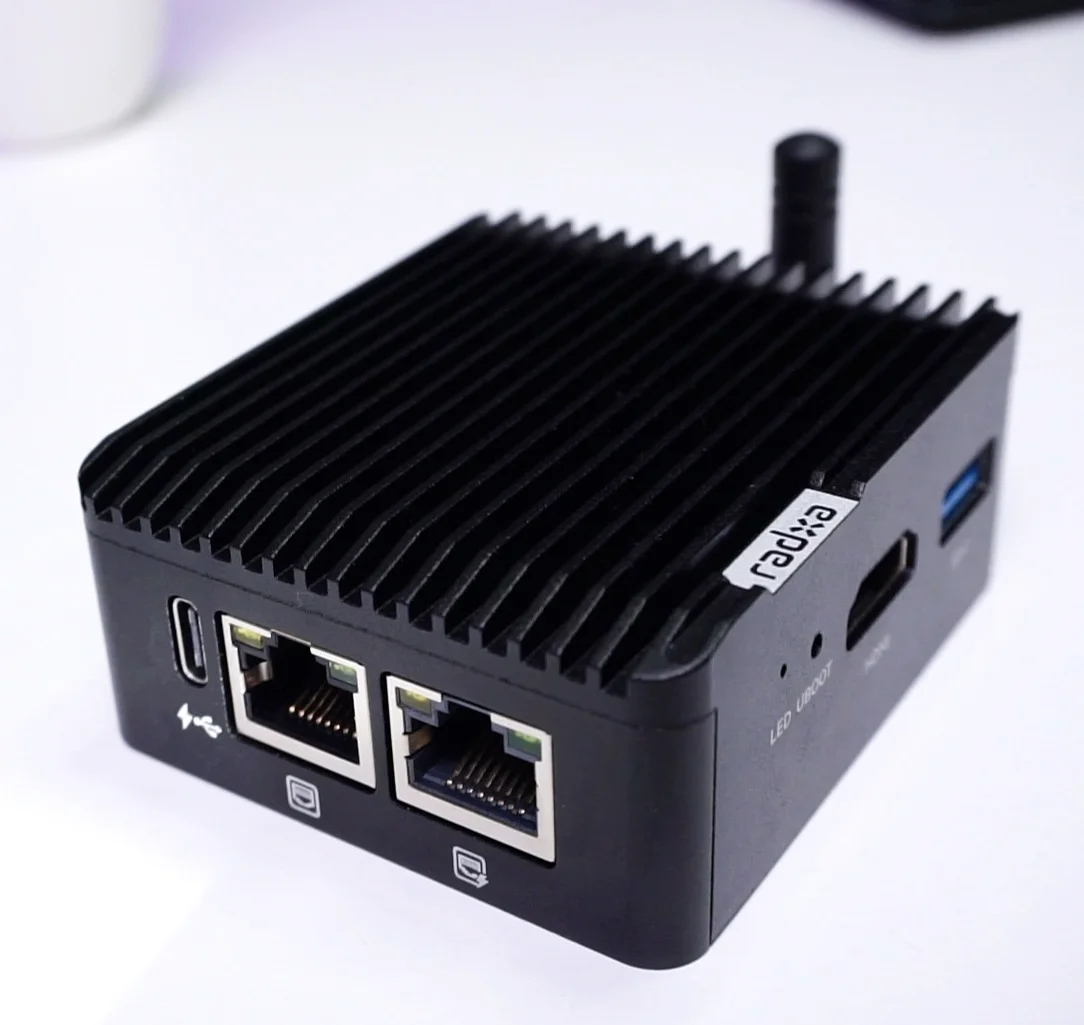
My setup & first impressions (OS situation)
I started with Armbian. It booted fine over LAN, but at the time there were a couple of missing pieces for my testing: no HDMI output and no exposed temperature sensors, which I needed for thermal checks. On the plus side, it shipped with a Linux 6.16 kernel, so I’m optimistic about where community support is heading.
Next I tried Radxa’s own Linux image (they also offer Android). The image was labeled Debian Bullseye, but the system actually identified itself as Debian 13 “Trixie” during my checks—which was pre-release at the time. Despite that, it worked surprisingly well and gave me the sensors and display I needed.
Thermals Performance
With no heatsink, the A5E idled around ~70 °C. On this board the sensors present as two groups: cpul (the 1.4 GHz cluster) and cpub (the 1.8 GHz cluster).
Since I planned to run benchmarks, I installed the metal case (with a thermal pad). Assembly took a minute—remove the side struts, slide the board in, refit the I/O side panels (Wi-Fi antenna + LAN line up nicely), then screw it all back together.
Result: idle temps dropped to ~43 °C—about a 40% reduction—and with this, I continued my tests.
Benchmarks Results
All tests were run on the 4 GB variant, fresh boot, same desk ambient, desktop still running in the background as it came built in the debian Image, accessed via SSH.
1) CPU: Sysbench Test (Calculates prime numbers upto 20,000 for every 10k requests)
-
Total time: ~39 s
-
Throughput: ~2,500 events/s
-
Peak temp: ~58 °C (with the case)
A touch slower than Raspberry Pi 4 in this specific test (by ~3 s), but close.
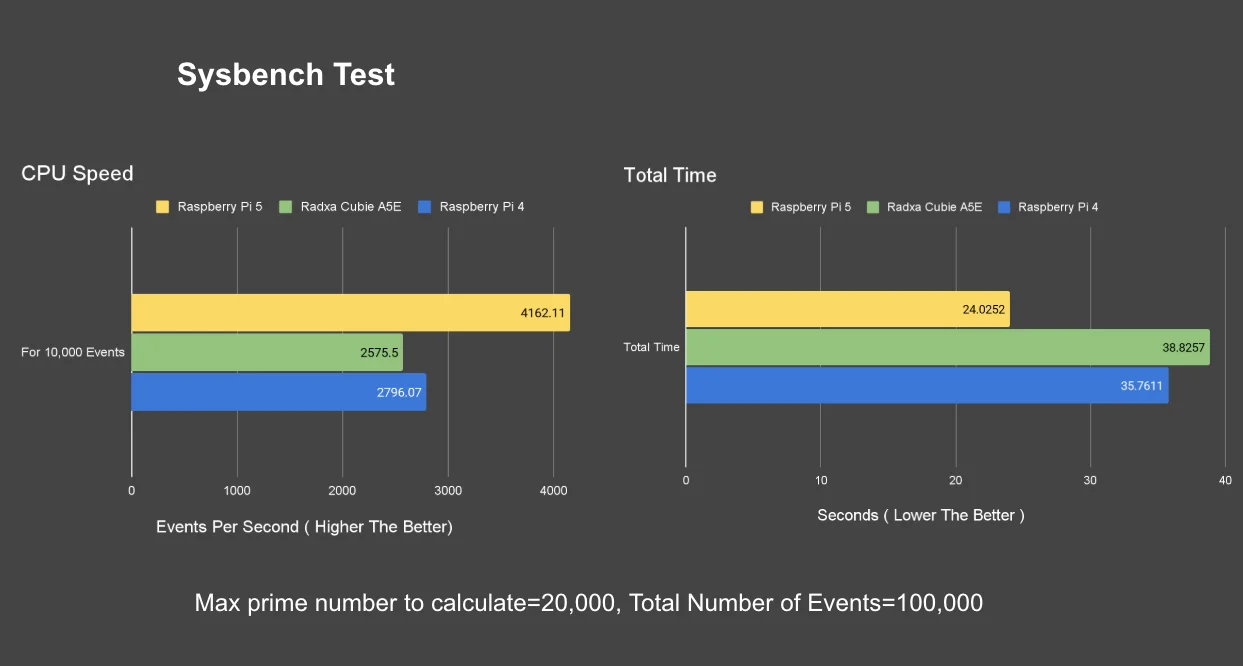
2) Memory Tests
-
MEMCPY: ~2,900 MiB/s
-
Block Copy (1 KiB): ~4,000 MiB/s
Better than Raspberry Pi 4 in my runs. The Raspberry Pi 5 and Cubie A5E both have a 32-bit memory bus, but Pi 5’s LPDDR4X tends to push higher transfers than LPDDR4 that the A5E and Pi 4 has.
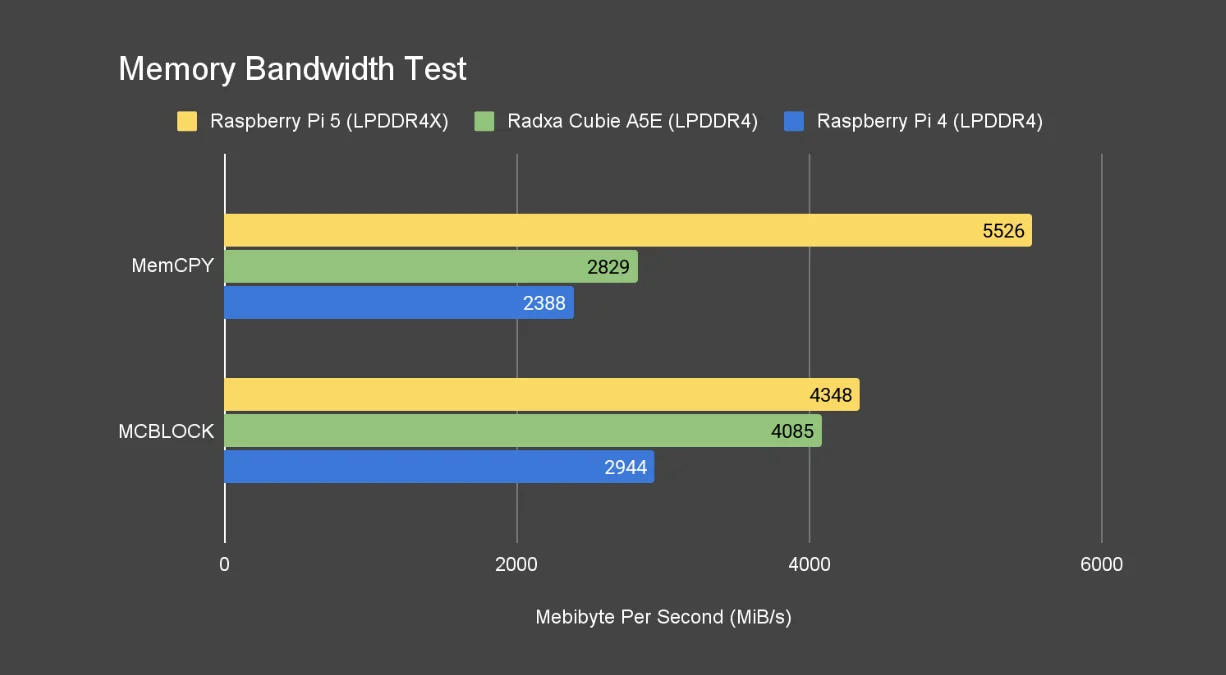
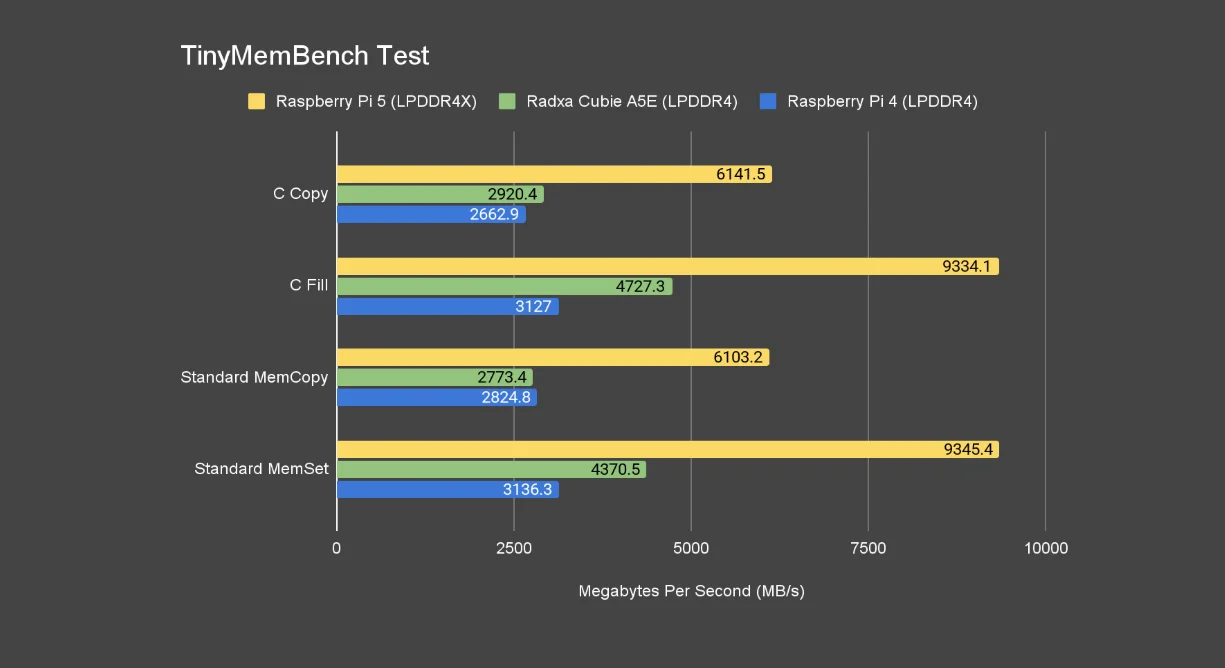
3) Geekbench (CPU)
-
Single-core: 241
-
Multi-core: 1005
-
Power draw: ~2 W idle; up to ~6 W during multi-core phases
-
Thermals: peaked around ~75 °C ( with the case )
The Cubie A5E did perform better than the Raspberry Pi 4 in the multicore performance test.
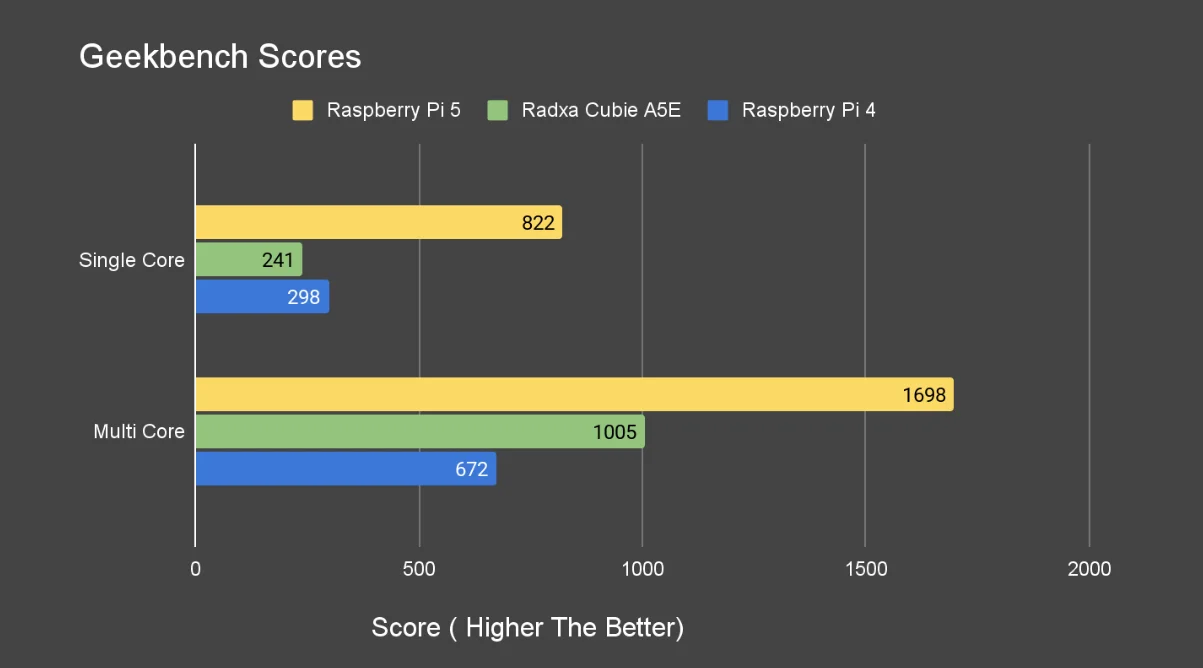
Storage & networking
-
NVMe over M.2 M-key (PCIe Gen2 x1):
lspciconfirmed Gen2 x1;hdparmreads landed around ~366 MB/s, which is right in line with PCIe 2.0 x1 limits. -
Dual Gigabit Ethernet: in repeated iperf runs, one port consistently tested a bit slower than the other. I am not sure why.

Whisper on Home Assistant (Docker)
One of my standard checks: Home Assistant + Whisper + Piper in Docker.
With Whisper small-int8, speech-to-text took about ~11 seconds for my sample—faster than my Raspberry Pi 4 with the same model. For voice-friendly HA automations at the edge, that’s a nice win at this size and power.
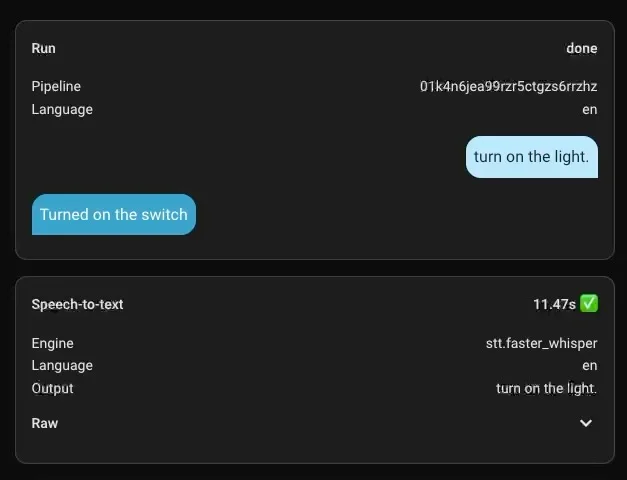
So… should you get one?
If you want a low-power, compact box with Wi-Fi 6, two GbE ports, and NVMe, the Cubie A5E is great for things like:
-
Pi-hole / AdGuard Home
-
Home Assistant (light-to-moderate setups)
-
DIY routers / multi-NIC tinkering
Just remember:
-
Passive cooling with the metal case is highly recommended.
-
PCIe is Gen2 x1—perfectly fine for snappy apps and Docker volumes, but not a storage monster.
Finally I would be still monitoring the Armbian community build for a more stable release.
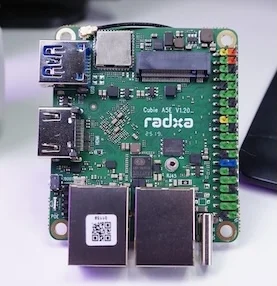
Buy Radxa Cubie A5E:
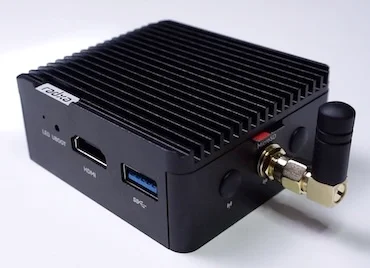
Buy Radxa Cubie A5E Metal Case:
Support the Channel
Enjoyed this article? Consider supporting the channel:
-
✅ Subscribe to the YouTube channel
-
☕ Support my work on Patreon or Buy Me a Coffee
